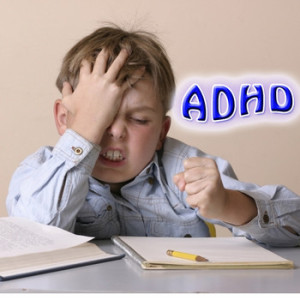 So you think your child has ADHD….
So you think your child has ADHD….
ADHD is one of the most common disorders found in children and typically children are diagnosed from after the age of four. It can be harder to diagnose ADHD in children under the age of four because certain behaviors (fidgeting, interrupting, and being bored easily) can be just regular toddler behavior.
If you suspect your child has ADHD, the first step is to go to a child psychologist for an initial evaluation. You should go to a child psychologist for an ADHD evaluation if the symptoms your child is experiencing impacts his or her behavior at school and at home.
Evaluation with the child psychologist
There is no single test to diagnose ADHD, so when meeting with the child psychologist, different assessment tools will be utilized. The child psychologist, after administering questionnaires and interviews with the parents and child, will determine whether the behaviors your child is exhibiting is due to ADHD.
There are other conditions that can be impacting your child’s behavior which can be confused for ADHD such as anxiety, learning disorders and mood disorders. Sometimes a parent can come to a child psychologist for ADHD testing and discover that really their child suffers from a learning disorder instead (this allows them to seek the proper treatment).
What happens at the evaluation
Before you meet with the child psychologist, is it important you meet with your child’s teachers to discuss his or her behavior at school. The clinician will ask the parents specific questions regarding the length of time the child has behaved this way, which specific symptoms he or she experiences and to what severity. The clinician will review the child’s medical history and administer hearing and vision tests to determine if the child is suffering from another disorder.
Parents (and sometimes teachers) will be given behavioral assessment questionnaires to fill out regarding their child’s behavior. The clinician will also ask about family history and what is going on in the child’s home life. In certain cases, family dysfunction and stress can cause the child to act out and experience symptoms similar to ADHD.
Assessment tools for evaluation
- DSM5 Criteria – The psychologist evaluating will check to see if the symptoms match the Diagnostic and Statistical Manual of Mental Disorders (DSM5) criteria for ADHD. A child has to experience six or more symptoms of inattention and six or more symptoms of hyperactivity and impulsivity for more than six months. Examples of inattention include: lack of attention to detail, careless mistakes in school, difficulty sustaining attention in tasks, inability to follow through instruction,and losing things constantly etc.) Example of hyperactivity and impulsivity include:fidgeting, leaving seat at inappropriate times , unable to play quietly, always on the go, blurting out answers, and inability to wait etc.
- Behavioral rating scales– For example, The Connor Rating Scale for Parents and Teachers (parents and teachers rate symptoms and behaviors on a scale of 0-3)
https://centerforpsychiatryandbehavioralhealth.com.c25.sitepreviewer.com/ESW/Files/Conners_Parent_Rating.pdf
https://centerforpsychiatryandbehavioralhealth.com.c25.sitepreviewer.com/ESW/Files/Conners_Teacher_Rating.pdf
3. Medical Records/ Intelligence Testing/ Vision and Hearing Assessment- These tests are important to see if the symptoms experienced can be attributed to ADHD or if it is due to another disorder. The child psychologist can also see if the ADHD diagnosis is co-morbid with another condition.
So your child has ADHD… What is the next step?
If your child has ADHD, the next step is to establish an individualized treatment plan to best meet the needs of your child. The child psychologist and parents work together in discussing the different methods of treatment which include: psychotherapy, medication, neuro-feed back and CBT.
While many children diagnosed with ADHD are prescribed medication, many parents opt to include therapy as well. The first step before you can treat the problem, is to identity what is causing the behaviors. Now that you have discovered your child has ADHD, you can work on the next step to alleviate their symptoms.
Work Cited
https://www.chadd.org/understanding-adhd/for-parents-caregivers/comprehensive-assessment.aspx
ATTENTION-DEFICIT, S. O. (2011). ADHD: clinical practice guideline for the diagnosis, evaluation, and treatment of attention-deficit/hyperactivity disorder in children and adolescents. Pediatrics, peds-2011.
https://www.chadd.org/Portals/0/AM/Images/Understading/EvaluatingYourChild_for_ADHD.pdf
Association, American Psychiatric, ed. Diagnostic and Statistical Manual of Mental Disorders: DSM-5. Washington: American Psychiatric, 2014.
https://www.healthychildren.org/English/health-issues/conditions/adhd/Pages/Diagnosing-ADHD-in-Children-Guidelines-Information-for-Parents.aspx
https://www.aafp.org/afp/2001/0901/p817.html
